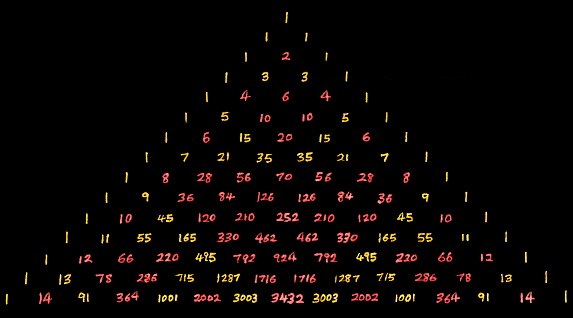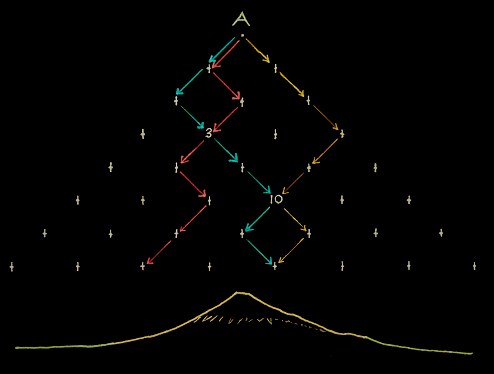»» www.MountainLake.com
«« Jump to »» Homes
... Land
... Businesses
.. What'sNew .. local
sounds 'n color .. Mosaic ..
October 31, 2011 ...
What is Going on with the Economy, Life and the Universe?
 In a thousand words (plus footnotes)
allow me to paint a picture to give you a touchstone for
deciphering many things. Way back in 1977 and 1978, your
webmaster here published in The Colorado Engineer magazine of The
University of Colorado a couple of articles which gave a
scientific model to forecast where we are now. In the
footnotes below are links to scanned copies of the original articles
along with the front covers of the magazine. The Colorado Engineer
lives on at http://cem.colorado.edu/
In a thousand words (plus footnotes)
allow me to paint a picture to give you a touchstone for
deciphering many things. Way back in 1977 and 1978, your
webmaster here published in The Colorado Engineer magazine of The
University of Colorado a couple of articles which gave a
scientific model to forecast where we are now. In the
footnotes below are links to scanned copies of the original articles
along with the front covers of the magazine. The Colorado Engineer
lives on at http://cem.colorado.edu/
Here, I summarize the articles and bring you forward 33 years.
The primary source referenced in the articles is systems ecologist
Howard T. Odum (1924-2002). I first met Howard at a small lecture
in Gainesville, Florida when Donna and I were attending The
University of Florida in 1975. The message for today is as
follows: the entire world is decelerating from a centuries long
rush of New World exploration, cheap and exploitable resources and
high birth rates. It is settling into a sustainable steady state.
This is not a pessimistic forecast. It has a scientific basis
across many fields. It has expected consequences, many of which we
are seeing unfold in the 21st century.
Since you are reading this within a real estate website, let's
unravel the housing and banking crisis. As you well know, we
humans have learned to frame houses and buildings quickly and
cheaply. Too cheap for our long term good. The low-cost building
era is almost over. It was possible because the energy and
material costs for building have been at an historic low as we
mined what was easiest to exploit in terms of labor and resources.
The thick and clear woods in older homes are no longer affordable.
Today, one can no longer build a home for the cost of what one can
buy a used home. The costs for new construction continue to rise
to meet new code requirements, higher tap fees and also the higher
expectations of
buyers (as in being warm and dry in January, gourmet kitchens,
fine baths, double garages, media rooms). The buying opportunities
on older homes, even just 5-year old homes, continue to be very
tempting. There may even be a shift in which people of all
ages are not as interested, capable or experienced in new home design
and construction.
There is a millennial shift away from doing improvements and building up sweat equity
in one's home. For the young, there could also be a skill barrier or a familiarity barrier.
Young boys do not grow up with saws and hammers. Their excitement is not in creating a fort,
but instead in making something virtual and online. Maybe that's a phase that has peaked.
People can rediscover the satisfaction in dreaming up and assembling real and tangible designs from scratch.
We didn't get the flying cars of the future (they never made gravitational sense), however, we have
arrived upon the the George Jetson button-pushing desk jobs. Our time at work and play in this
electronic age is moments of stillness punctuated with button pushing (key pressings and mouse clicks).
Existing homes and their infrastructure may not be
as efficient and as low maintenance as what can be achieved with
new construction. "You get for what you pay" still
applies. Value-for-Value, your
existing home is just as tradeable for like property in value as
it has always been.
If you have a substantial mortgage on your home or second home,
the "value-for-value" formula can be severely warped,
thanks to
the temptations of easy credit and a tip of the hat to the
financial wizards in Wall Street, Washington and beyond.
The
underlying basis for the financial and banking crisis comes world
wide as shrinking economies transition into the steady state patterns Odum predicted.
The pool of cheap and exploitable energy and labor has been drained.
Birth rates per couples have come down in
Italy, Japan and the USA.
Young talent and easy to tap resources
are no longer pouring into governments and economies.
After centuries of advances in medicine and safety, people are
living longer ... and better!
These are welcomed improvements; our
prayers have been answered!
So why all the whining, desperation
and violence? Ah, 'tis easier to be young than to grow up.
So just what is the bright future into which we are headed? Here
it is in one word: QUALITY. Invest in Quality. Buy Quality. Its
rival, Quantity, is becoming an anachronism. Embrace excellence.
Say "Hello" to individuality in people, places and times.
Howard Odum had a nice way of diagramming Quality while
accounting for the 2nd Law of Thermodynamics. Some of you might
remember the author of Zen
and the Art of Motorcycle Maintenance coming out with a
philosophy about Quality. The scientific background of your
webmaster here is not so much in Odum's work as it is in
fundamental physics along the lines of Einstein and Niels
Bohr. A couple of years ago there was a resurgence in
understanding how increases in quality set the stage for a
downslope run to greater entropy (see footnotes) and create the
driving forces in nature and human affairs. It is quality
experiences that give you the energy and drive to rise and shine
to perform well. This quintessence can be quantified. What is rare
and unusual is indeed precious. You always knew that, and yet, the
masses demand and get everyday predictably low prices. Their
wishes are granted with a Walmart or McDonalds within minutes of
wherever they may be. Yes, one can pretty much buy a meal cheaper
at McDonalds than anywhere else or prepare at home (when you
include your shopping time, refrigeration and waste). Fast food is
like mass housing. You get for what you pay. And yet, the
fast-food tract-home uniformity destroys the first law in real
estate: Location, location, location. Today, what the ancients
called the genius of location has been undermined by identical
stores and products repeating themselves every few miles. Who
ordered that? We did, because it was all so easy and tempting in
the era of exponential growth and mass advertising. The penalty
has been cookie-cutter uniformity. To compensate and put the
"surprise" back in a meal, McDonalds created the "Happy Meal".
The sanctity of Location and Quality is still valid. It is coming
back. The laws of physics, energy and entropy are on its side.
Notice how convenient and efficient things are when you know where
important items are located and when information and memories can
be quickly retrieved. That's a happy low entropy condition. When a
stage is properly set, you are ready to do great things. Left to
its own, such a state of affairs runs down; it diffuses and is
quickly lost in the sands of time.
A source of low entropy can fuel a process as surely as can a
barrel of oil.
The low-entropy high-quality product stored in an organism can be its DNA.
Quality
experiences give one a lightness of being and drive to do more.
Quality is the new energy.
..
FootNotes:
Wiccapaedia on Howard Odum: http://en.wikipedia.org/wiki/Howard
T. Odum
Howard's latest book A Prosperous Way Down, University Press of
Colorado (2001) reiterates and continues the same themes used in The Colorado Engineer
articles. A related article by his wife Elizabeth
is here: http://www.unicamp.br/fea/ortega/energy/B.Odum.pdf
Click » here for pdf images of my technical article
inspired by Odum in the October, 1977 edition
of the Colorado Engineer.
Click » here for pdf
images of my Visions
of the Future follow up article in the
January, 1978 edition of the Colorado Engineer.
Below are some excerpts from this article and then a somewhat
technical description of how changes in entropy can account for
the appearance of forces.
"Only through an unprecedented use of fossil fuels has our
present world come into being. But today world energy developments
are climaxing. Considering how much energy we expend in our
present efforts to obtain energy, one realizes that net energies
are less today than ever before. As our present energy base powers
down and shifts into long range patterns, the entire world will
progress into a steady state system."
"Free enterprise will prevail. However, money will not be able to
generate more money as easily as it does today. The high costs of
energy will prohibit rapid growth and the fulfillment of many
investments. Deregulation of our energy industries will allow them
to mushroom in size while still delivering little net energy.
Inflation will be rampant. Businesses will not be able to spur on
growth by simply advertising. Opinions will not be so easily
molded when energy is limited. Advertising must appeal to the new
long rang goals of steady state systems."
"Public works projects will focus on restoring and maintaining
existing buildings rather than constructing new ones. More open
malls like Boulder's and Aspen's will appear. Many office
buildings will become dwellings for people who work in the
immediate vicinity. Noise levels will drop, the air will be
cleaner, and windows will open."
Lots more like that is predicted in the 1978 article ~ some of it
is accurate, some of it is still pretty far off.
"During the transition to a steady state, civil disorder, heart
disease and cancer will increase. .... wild fluctuations in
climate and human conditions will occur. Like an immense ship with
its stabilizers withdrawn, direction of this planet will be
difficult, challenging and exciting."
..
 Scroll down for novel ways of describing
and working with entropy.
Scroll down for novel ways of describing
and working with entropy.
A pithy exposition of how entropy and quality can be computed
would be helpful. The background material has been around for
centuries and can still be retrieved, albeit not easily or
comprehensibly if you don't already know exactly what to
find.
Here is a scientific link to a January 6, 2010 article on how
gradients of entropy create all of the familiar natural
forces: http://arxiv.org/abs/1001.0785v1
Click on the PDF link in the upper right corner of the page that
opens to see this article by Eric Verlinde titled: "On the Origin
of Gravity and The Laws of Newton." This article has been
cited (respectfully) in the physics community a thousand times
since it was published.
For a mnemonic device to help you understand entropy, I give you
Pascal's Triangle.

As you drop down from each entry in the triangle, one shifts down
to the left or to right. This can be a representation of a
pin-ball rolling down an incline with a fifty-fifty chance at each
bumper of veering to the left or to right. Or it can be
grains of sand dropped vertically and forming a pile.
Mathematically, each row is the coefficients for the expansion of
(x+y) raised to the Nth power. The apex is (x+y)^0 = 1. The bottom
row is the coefficients for (x+y)^12. The sum of the numbers
across row N is 2^N. Each number in the triangle is the sum
of the two numbers directly above it. One can use this property to
add more rows further down. This works because each number is a
count of the number of ways to zig-zag back to the top. The
diagram below indicates what we mean by these routes. Pascal's
Triangle is often associated with coin tosses or "Bernoulli
Trials" (statistically independent events). Each move to the left
can be Heads; each move to the right would be Tails. The numbers
in row N are an indication of the frequency of heads or tails
after N tosses of a fair coin. If you divide each entry in a
particular row of Pascal's Triangle by the sum of all of the
entries 2^N, you get the probability of reaching that entry after
N independent coin tosses or trials. The even numbers in the
triangle form triangles within the larger triangle.

ENTROPY is all about counting the number of ways a state can
occur. The 2nd Law of Thermodynamics says that an initial state
will most likely run down from its Apex to lower states which have
the most routes to them. Left to its own, without an improbable
source of energy or quality to raise it back to an unusual state,
an initial low entropy state will naturally "decay" to higher
entropy states for which there are more pathways to be reached.
Because they have more ways to occur, the higher entropy states
are more probable or frequent. The states with the highest entropy
have the greatest number of ways of coming into being and are
therefore the most likely to be found. The total number of
potential pathways after each trial increases exponentially, so to
keep the numbers manageable, physicists use the logarithm of this
number as the measure of entropy and thereby get a measure that
follows the laws of simple addition.
Without being more technical, you now have a glimpse of how
gradients of entropy can give the impression of systems being
pressured to move in predicable ways as though there were forces
acting upon them, when in fact, these "forces", even gravity, have
more to do with available pathways than anything else.
When you purposely configure things in an improbable manner, as
when you tidy a room or better, create a special and unusual
product, your new arrangement can put you back at an apex and give
you the energy and boost to do new things as your initial state
runs down. Little pockets of order are physically equivalent to
reservoirs of potential energy. This is why excellence can
be energizing. It is worth noting, however, that whether you tidy
a room to create order or instead work towards messing up a room,
either way, there is sweat energy involved and heat losses which
cause the total entropy to increase. What we are focusing on here
is how tiny localities and moments of time can be highly
improbable (by luck 'n pluck or by direct human intervention) and
thereby be energizing and uplifting. And this brings us back to
the first rule in evaluating real estate: Location, location,
location. By location, we include every pathway and decision
involved in how a particular home, place and time has been
configured and arranged.
 Can't get enough of The Colorado Engineer,
published since 1903? Click
here to see the Rocket Science article by yours truly.
Can't get enough of The Colorado Engineer,
published since 1903? Click
here to see the Rocket Science article by yours truly.
It's a primer on Einstein's Theory of Special Relativity. When it
was published in October of 1978, I was the business manager of
the
magazine. This is back when one literally had to cut and paste
things. The glue didn't hold for the caption to one of the
drawings,
so a caption got lost somewhere in the production process. There
was also a tremendous difficulty in getting our typesetter to do
the equations correctly (a couple of errors managed to slip
through). The typesetter who had bid for the magazine's
production,
initially tried to charge The Colorado Engineer one hour of labor for
each equation that was set. Those were the days.
The magazine was well funded by large corporations like General
Electric, advertising to attract graduating students
to come and work for them.
 Jump
to Homes ... Land
... Businesses ... Weather .. What'sNew
Jump
to Homes ... Land
... Businesses ... Weather .. What'sNew


 to .. Main Menu .. ..
to Real Estate choices ..
to .. Main Menu .. ..
to Real Estate choices ..
..
»» www.MountainLake.com
«« Jump to »» Homes
... Land
... Businesses
.. What'sNew .. local
sounds 'n color .. Mosaic ..
 In a thousand words (plus footnotes)
allow me to paint a picture to give you a touchstone for
deciphering many things. Way back in 1977 and 1978, your
webmaster here published in The Colorado Engineer magazine of The
University of Colorado a couple of articles which gave a
scientific model to forecast where we are now. In the
footnotes below are links to scanned copies of the original articles
along with the front covers of the magazine. The Colorado Engineer
lives on at http://cem.colorado.edu/
In a thousand words (plus footnotes)
allow me to paint a picture to give you a touchstone for
deciphering many things. Way back in 1977 and 1978, your
webmaster here published in The Colorado Engineer magazine of The
University of Colorado a couple of articles which gave a
scientific model to forecast where we are now. In the
footnotes below are links to scanned copies of the original articles
along with the front covers of the magazine. The Colorado Engineer
lives on at http://cem.colorado.edu/ Scroll down for novel ways of describing
and working with entropy.
Scroll down for novel ways of describing
and working with entropy. 

 Can't get enough of
Can't get enough of 
